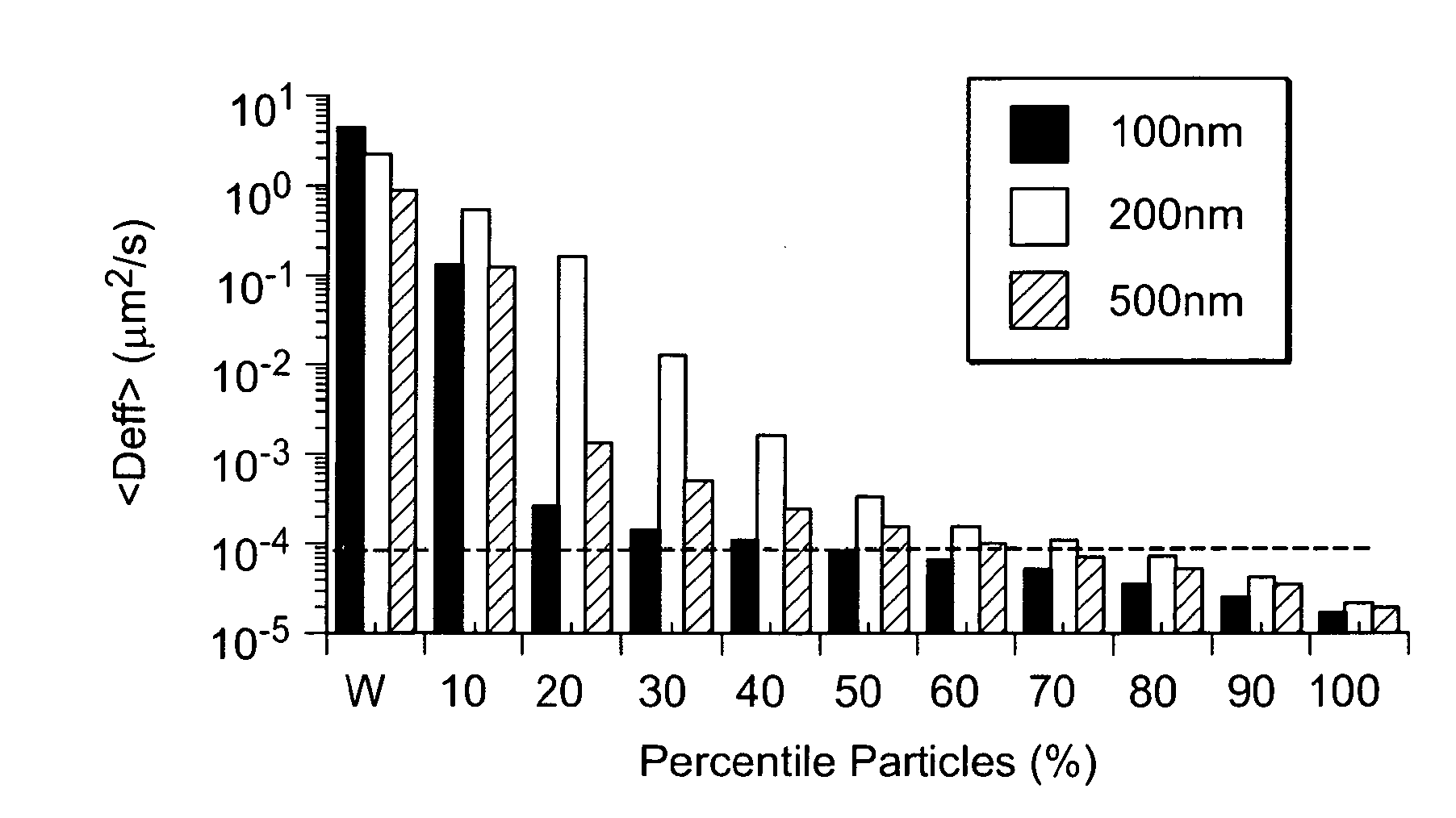Compositions and methods for enhancing transport through mucus
- Summary
- Abstract
- Description
- Claims
- Application Information
AI Technical Summary
Benefits of technology
Problems solved by technology
Method used
Image
Examples
Embodiment Construction
1. Overview
[0060]The present invention relates in part to a nanoparticle or microparticle coated with a surface agent that facilitates passage of the particle through mucus. Said nanoparticles and microparticles have a higher concentration of surface agent than has been previously achieved, leading to the unexpected property of extremely fast diffusion through mucus. The present invention further comprises a method of producing said particles. The present invention further comprises methods of using said particles to treat a patient.
[0061]Cervicovaginal (CV) mucus typically exhibits macroscopic viscosity within the range (albeit in the higher end) of typical human mucus secretions, including lungs, GI tract, nose, eyes and epididymus. This is partly attributed to the similarity in the chemical composition of various human mucuses. For example, the mucin glycoform MUC5B is the major secreted form of mucin in the mucosal layers protecting the CV tract, lungs, nose, and eye. The mucin ...
PUM
| Property | Measurement | Unit |
|---|---|---|
| Fraction | aaaaa | aaaaa |
| Time | aaaaa | aaaaa |
| Diameter | aaaaa | aaaaa |
Abstract
Description
Claims
Application Information
 Login to View More
Login to View More - R&D
- Intellectual Property
- Life Sciences
- Materials
- Tech Scout
- Unparalleled Data Quality
- Higher Quality Content
- 60% Fewer Hallucinations
Browse by: Latest US Patents, China's latest patents, Technical Efficacy Thesaurus, Application Domain, Technology Topic, Popular Technical Reports.
© 2025 PatSnap. All rights reserved.Legal|Privacy policy|Modern Slavery Act Transparency Statement|Sitemap|About US| Contact US: help@patsnap.com



